The Brookhaven Linac Isotope Producer (BLIP)
Built in 1972, the Brookhaven Linac Isotope Producer facility, or BLIP, at Brookhaven National Laboratory consists of a 30 m beam line and target area that shares protons up to 200 MeV and 165 µA with BNL’s nuclear physics program at the Relativistic Heavy Ion Collider. Protons are directed at specific target materials, enabling the production of a variety of isotopes for distribution to the nuclear medicine and industrial communities for research and commercial purposes. BLIP is also used for R&D of new and improved isotope production capabilities and to perform non-isotope irradiations such as materials research.
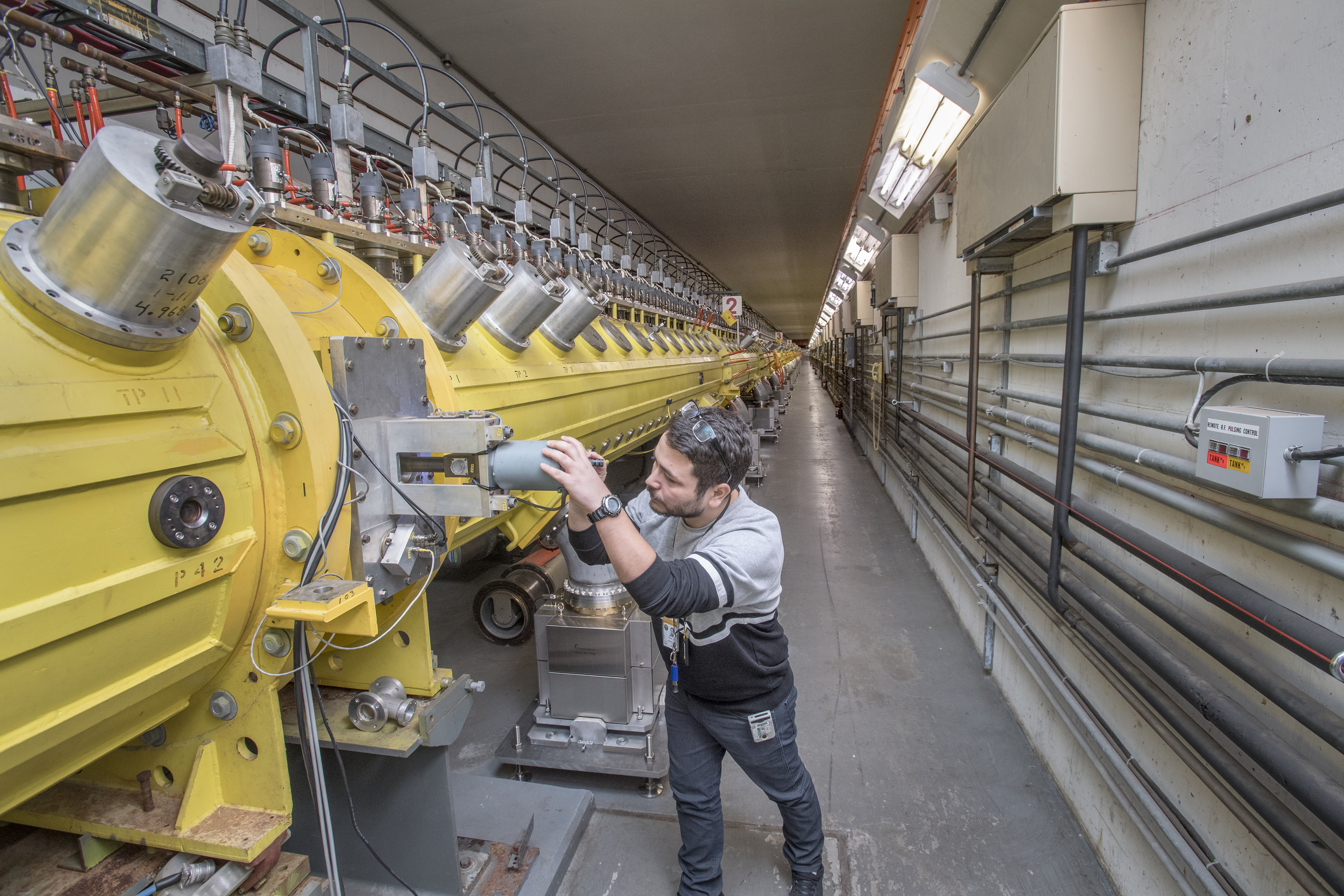
Once targets are irradiated in a water-cooled holder, they are raised from the accelerator vault to a hot cell with remote handling. Next, the irradiated targets are appropriately packaged and transported on-site to a dedicated hot cell processing facility that includes eight radiochemistry development labs, nine lead and steel hot cells, and an instrumentation lab for radionuclide and elemental assay.
Production of isotopes in the BLIP is dependent upon the operating cycle of the linear accelerator (Linac). The schedule and duration of Linac operations are determined by the plans and funding of the nuclear physics experiments.
More information can be found at the BLIP Homepage.
The LANL Isotope Production Facility (IPF)
Commissioned in 2004, the Isotope Production Facility, or IPF, at Los Alamos National Laboratory routinely produces radioisotopes at beam currents up to 275 µA using the 100 MeV proton beam generated at the front end of the Los Alamos Neutron Science Center (LANSCE) accelerator. Resulting high-purity, high-specific-activity isotopes— including actinium-225, sodium-22, and arsenic-73—are utilized across the fields of medicine, fundamental nuclear physics, national security, environmental science, and industrial applications.
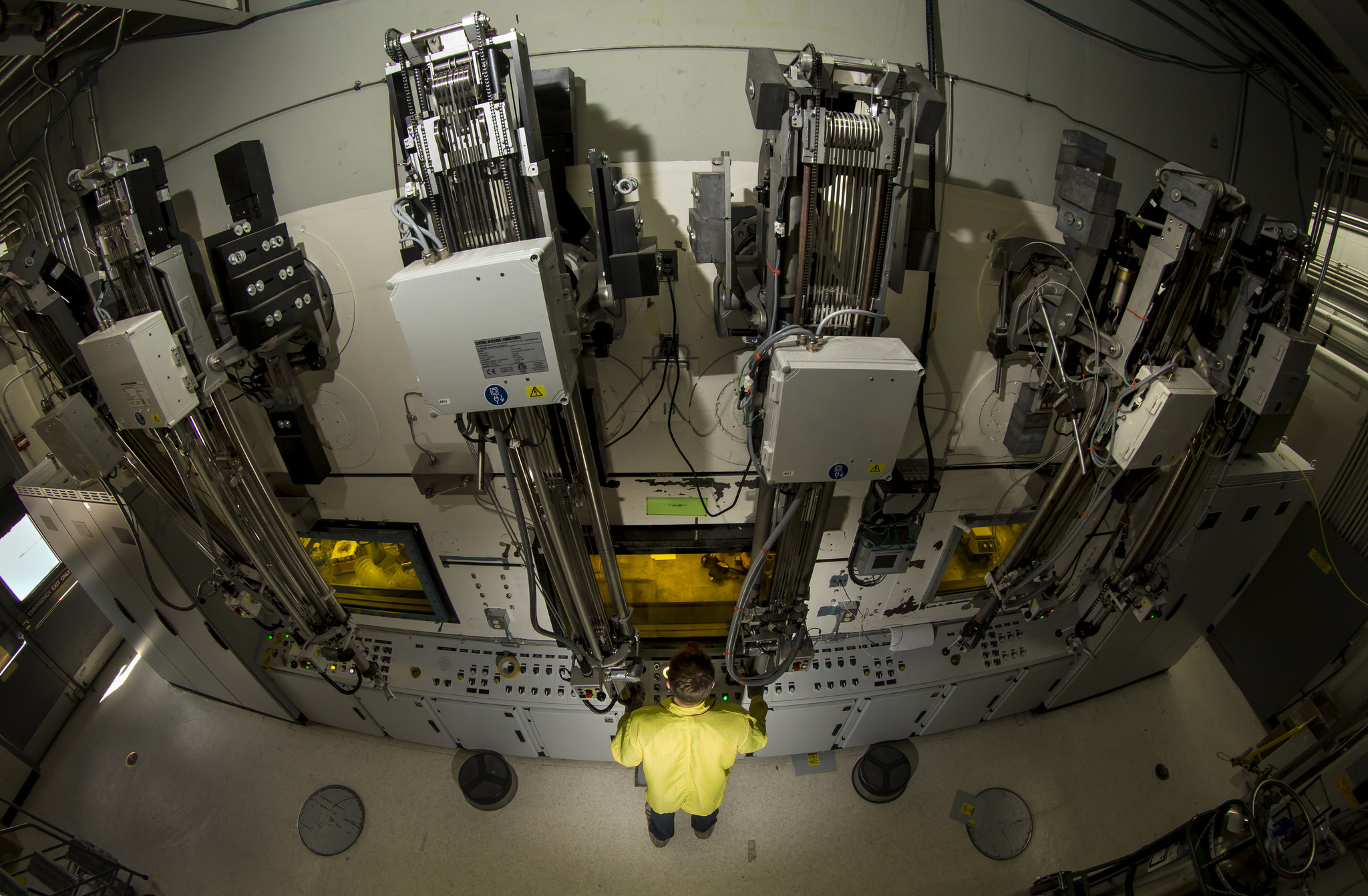
The IPF’s water-cooled target holder contains space for three targets, allowing for simultaneous proton-based production in three different energy ranges, as well as the availability of activation of small targets by the high energy secondary neutron flux. Targets are processed at the Hot Cell Facility in the nearby Radiochemistry Complex. This complex is equipped with 13 hot cells, as well as radiological and analytical laboratories and packaging operations. The Hot Cell Facility is where chemical processing occurs to isolate the desired isotope products suitable for use by customers. The IPF and Hot Cell Facility are also used to perform research to explore production and separation of novel radionuclides, including the collection of production-related nuclear data.
More information can be found at the IPF Homepage.
Argonne's Low-Energy Accelerator Facility (LEAF)
The Low-Energy Accelerator Facility, or LEAF, at Argonne National Laboratory combines an electron linear accelerator to enable radioisotope production with a Van de Graaff (VDG) electron accelerator to study radiation effects. The Argonne Radioisotope Research and Production Program (R2P2) performs a wide range of radioisotope separation, purification, and targetry method development and uses the LEAF for radioisotope production (including theranostics copper-67 and scandium-47), radiation testing and material response to received dose, and material activation studies. Since its construction in 1969, the LEAF has undergone significant improvements to boost the beam power and energy, now operating at energy up to 50 MeV and beam power up to 25 kW.
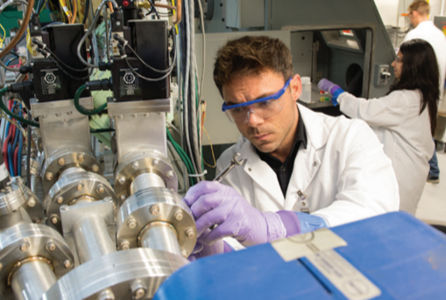
The LEAF’s Linac component can deliver continuous or pulsed beams with energies up to 50 MeV and average power exceeding 20 kW at energies relevant to radioisotope production. It is equipped with multiple target station locations that facilitate remote operations and post-run target transfer. Its counterpart, the low-energy (3 MeV) VDG electron accelerator, can deliver high levels of electron/photon dose rates (in pulsed or continuous mode) to critical components to test for radiation hardness and stability while avoiding activation and handling hazards of the irradiated targets. The R2P2 utilizes Argonne's hot cells, radiochemical laboratories, and the Analytical Chemistry Laboratory to aid in separations, processing, and purity analysis activities.
More information can be found in Argonne's Radioisotope Research and Production Program brochure.
The University of Washington Medical Cyclotron Facility
In 2016, research staff at the University of Washington’s (UW's) Medical Cyclotron Facility began routinely producing radioisotopes for the DOE IP, primarily the alpha particle-emitting astatine-211, used for cancer treatment research. Its short half-life, combined with a lack of cyclotrons capable of producing high-intensity alpha particle beams, has limited the global availability of astatine-211 in the past, and UW’s unique facility helps to alleviate this demand.

The facility is equipped with a Scanditronix MC50 compact cyclotron that is a fully tunable (with respect to beam energy and current) multi-particle instrument capable of accelerating proton, deuteron, helium-3, and alpha particle beams. Conditions for astatine-211 production at the Medical Cyclotron Facility include a 29 MeV alpha beam with 50 of beam current. The facility also contains two target stations inside the accelerator vault for radionuclide research.
More information can be found at the UW Medical Cyclotron Facility Homepage.
The University of Alabama at Birmingham Cyclotron Facility
The University of Alabama at Birmingham Cyclotron Facility houses a variable energy TR24 cyclotron capable of accelerating protons from 16-24 MeV with currents of up to 300 uA.
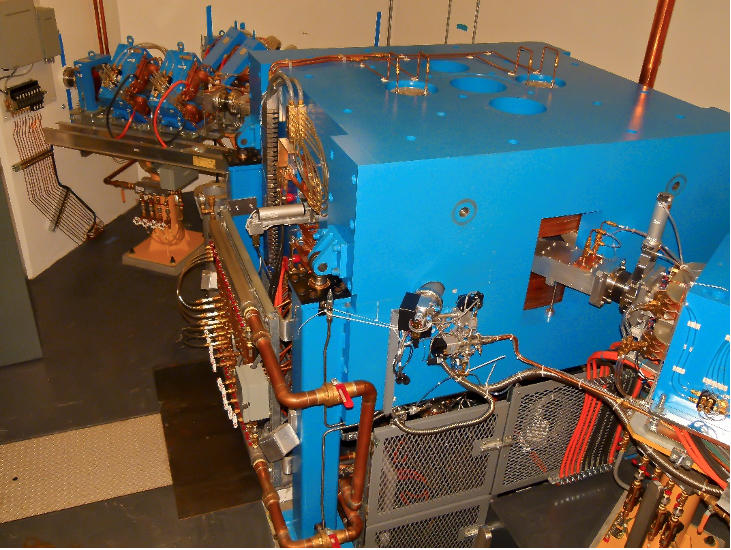
The cyclotron has four beamlines and associated target stations and produces a wide variety of radioisotopes including Pb-203, Zr-89, Cu-64, Sc-43, Sc-47, Ti-45, Co-55, Mn-52, V-48, and others. The highly trained staff can accommodate special requests and are DOT certified for national and international shipping.
Additionally, the cyclotron facility contains hot cells used to prepare human-use and preclinical radiopharmaceuticals and associated radiochemistry synthesis and radioanalytical equipment. The UAB Cyclotron Facility hosts visiting scientists and trainees for studies with short-lived isotopes where shipping may not be possible or where additional infrastructure is required.
More information can be found at the UAB Cyclotron Facility Homepage.
University of Wisconsin Cyclotron Research Group
Based in Madison, Wisconsin, the UW Cyclotron Group operates two machines: a CTI RDS 112 prototype and a General Electric PETtrace. These cyclotrons are capable of irradiating solid, liquid, and gas phase targets with protons up to 16 MeV or deuterons up to 8 MeV. Each machine offers multiple target ports, with 4 on the RDS and 6 on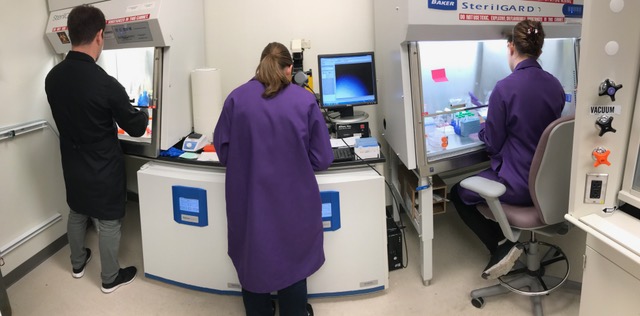 the PETtrace which includes an additional beam line featuring a 5-port switching magnet.
the PETtrace which includes an additional beam line featuring a 5-port switching magnet.
Supported by DOE IP funding, the UW Cyclotron Group has developed four new isotope production lines—manganese-52g, bromine-76, bromine-77, and yttrium-86.
The Group's facilities include hot cells and fume hoods for radionuclide science, radiochemistry, and other fundamental scientific inquiries. Adjacent laboratories provide a suite of small animal and clinical imaging equipment as well as GMP-compliant pharmaceutical preparation areas. For more information, visit cyclotron.wisc.edu.
Texas A&M University Cyclotron Institute
The Texas A&M University Cyclotron Institute, a Department of Energy University Facility, is jointly supported by DOE and the State of Texas and is a major technical and educational resource for the state and the nation.
The institute focuses on conducting basic research, educating students in accelerator-based science and technology, and providing technical capabilities for a wide variety of applications in space science, materials science, analytical procedures and nuclear medicine. Approximately 100 Institute members – scientists, engineers, technicians, support staff, graduate students and undergraduate students – are involved in these programs.
Internationally recognized for its research contributions, the Institute provides the primary infrastructure support for the University’s graduate programs in nuclear chemistry and nuclear physics.
The Cyclotron Institute staff constructed, and now operate, a K500 superconducting cyclotron and its advanced ECR ion sources. Together, these provide a powerful arsenal of intermediate-energy projectiles for use in both fundamental and applied studies. A facility upgrade is now underway to expand the capabilities and allow them to accelerate radioactive ion beams. A large complement of sophisticated state-of-the-art detectors and spectrometers provides the associated instrumentation necessary for modern research in the areas of nuclear structure, weak interactions, exotic nuclei, nuclear astrophysics, intermediate-energy reaction dynamics, nuclear thermodynamics, the nuclear equation of state, atomic physics and applied nuclear science.
Supported by DOE and the State of Texas funding, the Cyclotron Institute has developed astatine-211 (At-211) production which is now available for routine regional distribution through the NIDC product catalog.




